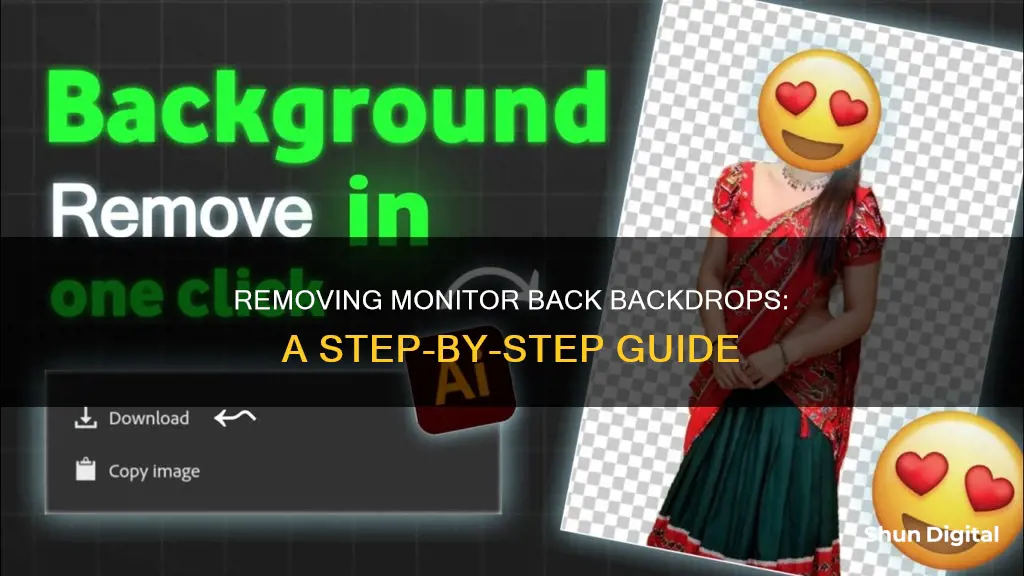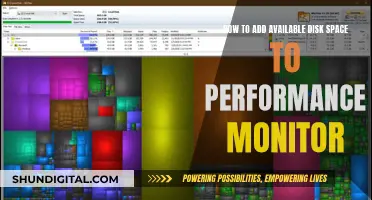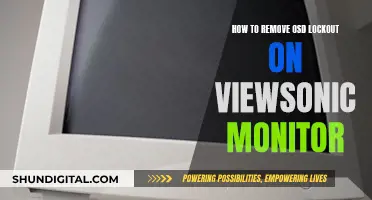
Removing the back cover of a monitor can be a challenging task. While it may be possible to remove the back cover of some monitors by taking out the screws, others may require more effort and caution. It is important to note that attempting to force the cover open can result in broken tabs and dents on the plastic. Instead, it is recommended to use tools such as fingernails, a flathead screwdriver wrapped in cloth or tape, or a guitar pick to gently pry the front and back apart. Working on a flat surface with a bit of cushioning can also help prevent damage to the monitor. Additionally, removing the cover on a flat surface with the screen facing down can reduce the chances of damaging the screen if tools are accidentally dropped.
| Characteristics | Values |
|---|---|
| Tools | Finger nails, guitar pick, flathead screwdriver, soft thin plastic, cloth or tape (masking/painters/duct) |
| Monitor position | Facing down on a flat surface |
| Monitor angle | Pry bit by bit along the seams |
| Monitor side | Pry from the sides after removing the back screws |
What You'll Learn

Use fingernails, a guitar pick, or a flathead screwdriver to prise apart the monitor
To prise apart the monitor, you can use your fingernails, a guitar pick, or a flat-head screwdriver. If you opt for the screwdriver, it is advisable to wrap the tip in a layer of cloth or tape (masking, painter's, or duct tape). This will help prevent damage to the plastic cover.
The monitor's front and back parts are often secured via tabs along its seam. To separate them, force the tabs apart one by one. It is important to be patient and gentle during this process, as forcing one side open can result in broken tabs and dents on the plastic. Work your way around the monitor, prying bit by bit along the seams.
When prying the monitor apart, it is recommended to place it on a flat surface, preferably with a bit of cushioning. This will help reduce the risk of damaging the screen if your tools slip or drop. Additionally, having the screen facing down can provide extra protection against accidental damage.
Before attempting to prise apart the monitor, ensure that all the screws at the back have been removed. You may need to tilt the monitor to access the sides for prying. Alternatively, you can sit on the floor with your legs crossed and the screen resting on your lap for cushioning while removing the cover.
Monitors: Comparing Color Accuracy Directly
You may want to see also

Use soft, thin plastic to hold the monitor open
To remove the back cover of a monitor, you can use soft, thin plastic to hold the monitor open while you pry other areas. This is done by using a tool such as your fingernails, a guitar pick, or a flat-head screwdriver wrapped in a layer of cloth or tape (masking, painter's or duct tape) to pry the front and back apart.
There is a seam that runs the length of the monitor that is secured by tabs. You can force them apart one at a time, and the front and back may separate. It is important to do this on a flat surface, preferably with a bit of cushioning, and to pry bit by bit along the seams. There are lots of tabs, so forcing one side will result in broken tabs and dents on the plastic. Just work on one tab at a time.
You are unlikely to damage the components this way, and the worst-case scenario is that you end up with tool marks on the plastic covers.
Connecting a Famicom Clone: Monitor Setup Guide
You may want to see also

Force apart tabs along the monitor's seams
To force apart tabs along the monitor's seams, you'll need to use a prying tool. This can be something as simple as your fingernails, a guitar pick, or a flat-head screwdriver. If using a screwdriver, it's recommended to wrap the metal tip in a layer of cloth or tape (masking, painter's, or duct tape) to avoid scratching the monitor.
With your chosen tool, begin to gently pry the front and back of the monitor apart. You can use soft, thin plastic to hold your prying tool in place as you work your way around the monitor. It's important to work slowly and carefully, forcing apart one tab at a time. There are lots of tabs holding the monitor together, so attempting to force one side open will likely result in broken tabs and dents in the plastic.
By prying bit by bit along the seams, you'll be able to separate the front and back of the monitor without causing damage to the internal components. This process may take some time and effort, but it will help ensure that you don't accidentally damage any sensitive parts.
Additionally, it's recommended to perform this task on a flat surface, preferably with a bit of cushioning. This will help stabilize the monitor and reduce the risk of slipping or applying uneven pressure.
Finding Monitor Panel Information: A Quick Guide
You may want to see also

Work on a flat, cushioned surface
Dismantling a monitor can be a delicate task, and it is important to prepare your workspace to make the process easier and safer. Working on a flat, cushioned surface is ideal for this kind of job. Here are some detailed instructions to help you prepare your workspace and stay focused on the task at hand:
Firstly, choose a flat work area that is clean, dry, and spacious enough for you to work comfortably. A table or desk is a good option, but you can also work on the floor if that is more convenient. If you opt for the floor, make sure it is free of debris and moisture, and consider placing a mat or sheet underneath you for added comfort.
Next, you will want to add some cushioning to your work surface. This is important because it will help protect the various components of your monitor from damage if you accidentally drop them. A soft cloth or towel works well for this purpose, but you can also use other materials such as foam or cardboard. Simply place the cushioning across your work surface, making sure that it covers the area where you will be working.
Once your work surface is prepared, gather your tools and place them within easy reach. Having everything you need close at hand will help you stay focused on the task and avoid mishaps. For example, if you are using a screwdriver, make sure it is the right type and size for the screws on your monitor, and have it ready before you begin.
When you are ready to begin dismantling your monitor, place it face down on the cushioned work surface. This will help protect the screen from accidental damage during the disassembly process. As you work, be mindful of the various components and cables inside the monitor. Work slowly and carefully, and if possible, refer to a guide specific to your monitor model to avoid damaging any sensitive parts.
By preparing a flat, cushioned work surface, you are taking important steps to ensure a safer and more efficient dismantling process. This will help you stay organised and focused, reducing the risk of damage to your monitor and its components.
Connecting Your AP CPM Peter: Monitor Setup Guide
You may want to see also

Pry bit by bit along the seams
To remove the back cover of a monitor, you can try prying bit by bit along the seams. This method is recommended to be done on a flat surface, preferably with a bit of cushioning.
First, remove all the screws from the back of the monitor. Then, tilt the monitor and pry from the sides. It is safer to have the screen facing down to reduce the chances of hitting it if your tools drop.
When prying along the seams, start from the trigger areas, where there is a slight gap. You can grab the front and back separately, pulling the seam open enough to slide a fingernail in and pull it open. You can also use a guitar pick or a flathead screwdriver wrapped in a layer of cloth or tape (masking, painter's, or duct tape). Just use soft, thin plastic to hold the pry open while you work on other areas.
Don't worry if you see little progress at first. Keep going all the way around, forcing the tabs apart one at a time. There are lots of tabs, so trying to force one side open will result in broken tabs and dents in the plastic. Just focus on one tab at a time.
You are unlikely to damage the components this way. The worst-case scenario is that you end up with tool marks on the plastic covers.
Pixel Perfect: Consistent Measurements Across Monitors
You may want to see also
Frequently asked questions
First, remove all the screws from the back of the monitor. Then, use your fingernails, a guitar pick, or a flat-head screwdriver wrapped in cloth or tape to pry the front and back apart. It is recommended to do this on a flat surface with a bit of cushioning.
Keep going all the way around the monitor, as there are lots of tabs. Do not try to force one side open, as this will result in broken tabs and dents on the plastic. Just work on one tab at a time.
Pry bit by bit along the seams, with the screen facing down to reduce the chances of hitting it if you drop your tools.







